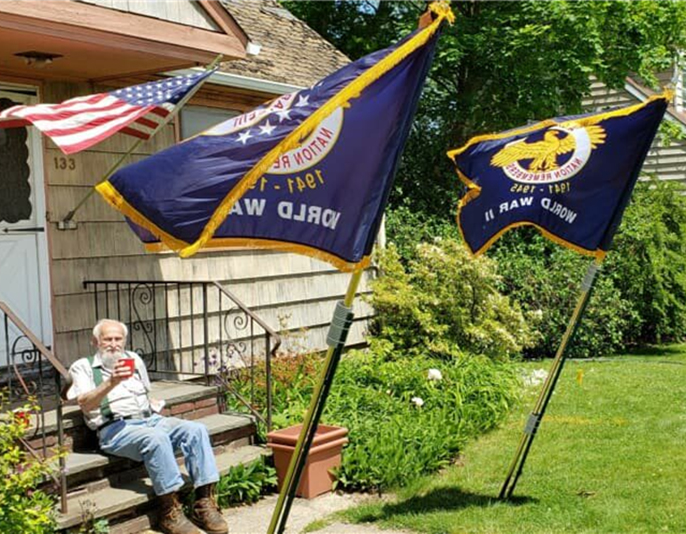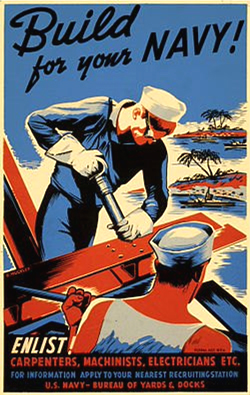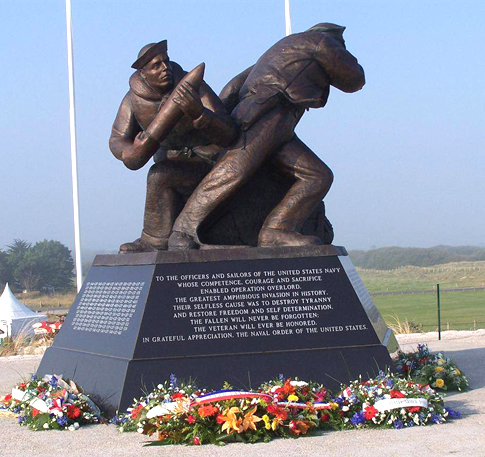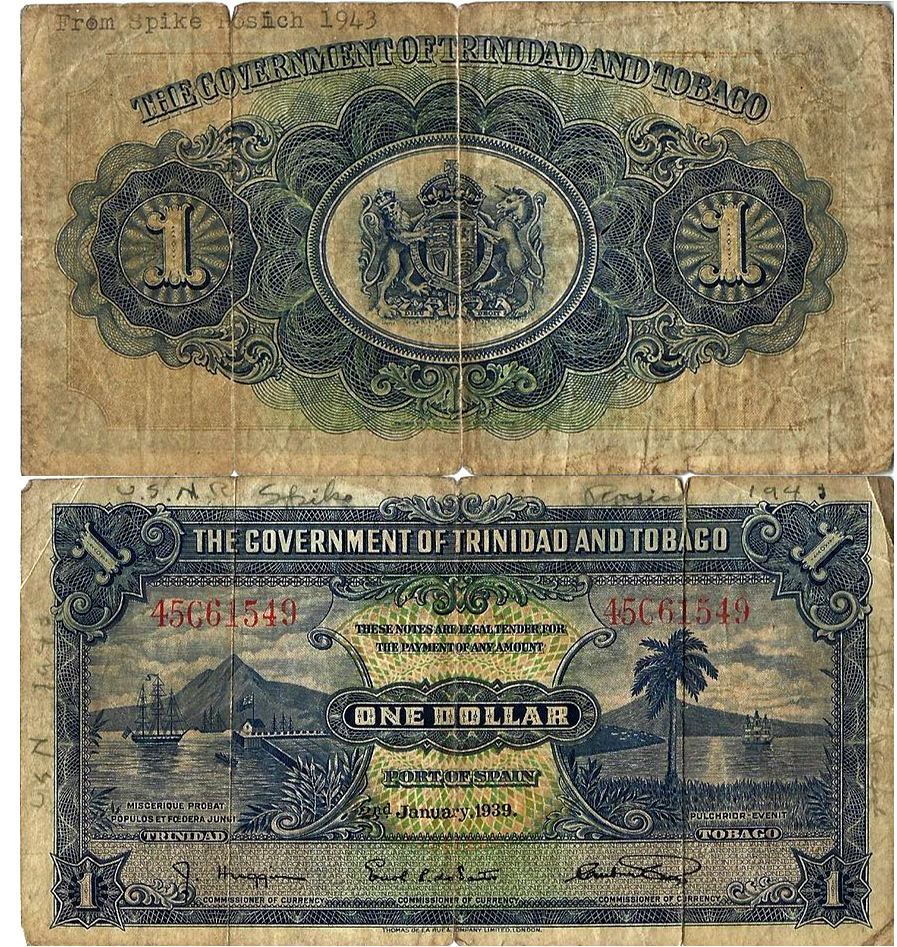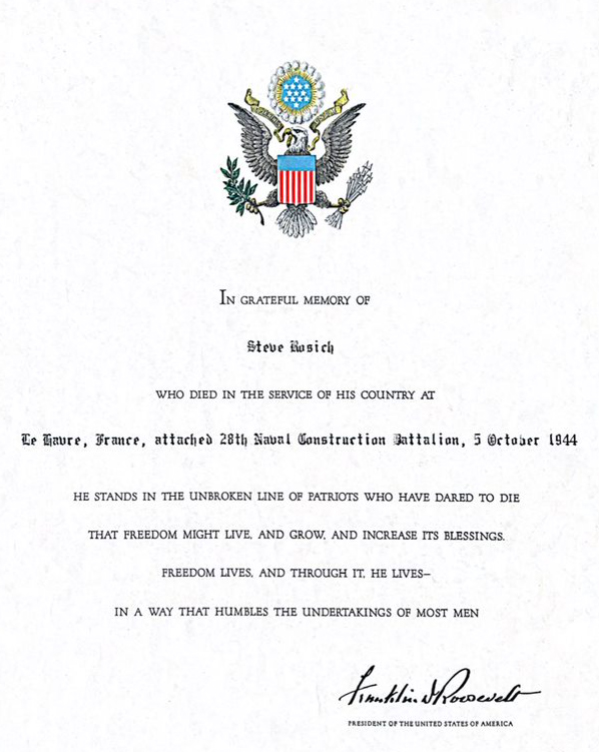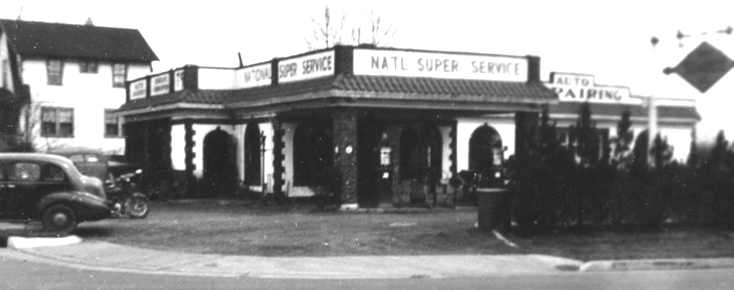
Meet Motor Machinist Mate 3rd Class Steve Rosich,
U.S. Navy Seabees, One of Cranford’s 86
Written by Janet Cymbaluk Ashnault, Edited by Don Sweeney, Research by Stu Rosenthal, and Military Proofreading by Vic Bary
This month, the Cranford 86 project is honoring the memory of Steve Rosich, Motor Machinist’s Mate 3rd Class (MoMM3c), Seabees. Steve grew up at 232 and 480 Dietz Street, in the small neighborhood located at the end of Myrtle Street on the outskirts of Cranford, near the Roselle/Linden border. Through the years, kids from these couple of isolated blocks of town tended to hang out together and remain close. Normally, my job with the Cranford 86 project is editor and Facebook administrator. When Don Sweeney weaves his heartfelt and informative narratives, I smooth out his words a bit and then share them with everyone on Facebook. Several years ago, while looking through family photos with my father, Myron Cymbaluk, I came across a photo of a handsome sailor posed on a classic Indian motorcycle. When questioned, my father told me it was Steve Rosich (pronounced RAH-sik), who died in World War II. I was always struck when my parents told me about their friends from Cranford who they lost during that time, and learning of Steve was no exception. My immediate family along with my father’s family all grew up in that Dietz Street neighborhood and for that reason, I have been honored with the task of writing Steve’s story.
Steve Rosich was born on September 8th, 1921 to parents Walter and Slavka, who were Hungarian immigrants. When Steve came along, he joined two older siblings, George and Mary. George was a star athlete at Cranford High School. His expertise on the football field and basketball court was well documented and can be found described in the Cranford Chronicle archives. When Steve’s sister Mary married Frederick Schmidt, she stayed close to home and began her new life in a house in that same Cranford neighborhood. I was told that the house that the Rosichs lived in was moved a short distance as a result of construction of the Garden State Parkway. Steve attended Cranford Schools, from Lincoln Elementary, on up.
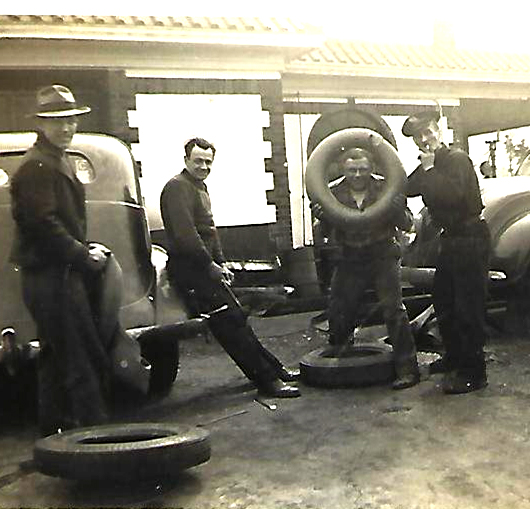
Like many young boys, Steve was interested in cars and motorcycles and it was said that as a youngster, he got hold of a motorcycle that wasn’t much more than wheels and a frame. In a quest to feel the wind in their hair, he and his friends all took turns pushing each other around on the bike. When he eventually got his driver’s license, he must have still felt the need for speed, as we found two articles in the Cranford Chronicle archives that us told of some fender-benders in which 19-year-old Steve was involved. In one, he overturned his vehicle, reported to be a Model A pickup truck, on Centennial Avenue! At some point in his young life, he earned the nickname “Spike”
1941 found Steve working as a mechanic at Tony Savino’s National Super Service Garage, 367 Centennial Avenue. I was lucky enough to speak to two nonagenarians from Cranford, who as young boys, knew and admired Steve Rosich. My uncle, Willie Cymbaluk, whose childhood home was on Dermody Street and Norman Hobbie from Winans Avenue, both told me stories and attested to the character of Spike Rosich. Norman Hobbie was so inspired by the relationship that he had with Steve that he included the following anecdote in a book that he wrote about his family history titled, The First 100 Years. Norman Hobbie writes: “Periodically, I would take my pile of used comic books to the service station where Spike (Steve) Rosich worked. It was a few blocks from Winans Avenue on the corner of Centennial and Myrtle Avenues. Steve would rifle through the pile of books, pick out a few, and then give me a quarter. (That was a lot of money in the early 1940’s!) Spike was kind, patient and protective. On occasion, someone at the service station would point at me, growling, “You, kid. Scram. We’re busy.” Spike would immediately intercede and say “Hey, he’s with me.” Norman Hobbie stated how disappointed he was when Steve “left for the Service” which occurred when 21-year-old Spike Rosich, as so many brave Americans did in this era, left the comforts of home to enlist in the military during a World War.
Before actively entering WWII, the U.S. was racing to build naval and air bases at strategic locations throughout the world. One such place was Wake Island, a tiny atoll in the western Pacific. On Wake Island, over 1,200 civilian contractors were employed for construction of a military base. Just hours after the Pearl Harbor attack, Wake Island was bombed and after a 2-week battle, where the civilians took up arms with the Marines, it fell to the Japanese. Many of the civilian contractors were killed or injured and some were taken prisoner for the entire duration of the war. The need for a militarized naval construction force that was able to operate within the war zone and defend itself was self-evident. On December 28, 1941, Rear Admiral Ben Moreell requested specific authority to recruit men from over 60 different construction and engineering trades for assignment to a Naval Construction Regiment composed of three Naval Construction Battalions (initials “C.B.s”) Taking their designation from these initials, this is how the U.S. Navy Seabees came to be. Their official motto: Construimus, Batuimus — “We Build, We Fight.” was furnished to them by Admiral Moreell himself.
With his mechanical skills, it seemed a natural fit that Steve became a part of the newly-created Seabees. He was assigned the rank of Motor Machinist’s Mate, which is described as someone who “Operated, maintained and repaired gasoline and diesel internal combustion engines and auxiliaries”. Additional duties included, working with machine tools, planning engine repairs and overhauls, as well as standing watch and supervising in engine rooms.
At Seabee Training Centers, recruits were taught how to adapt their civilian construction skills to military needs. In addition, they were trained in military discipline and the use of light arms. Typically, there would be three weeks of basic training after which a construction battalion would be formed. Unless there was an immediate need for the unit overseas, they would then be sent for six weeks of advanced military and technical training. During this time their battalion would undergo staging and outfitting before shipping out.
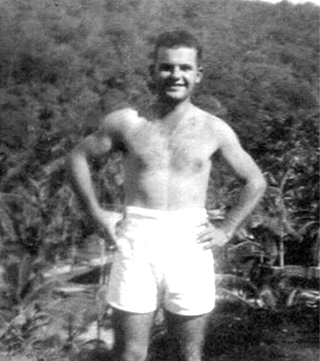
Steve became part of the 30th Construction Battalion and was stationed in the British West Indies on the island of Trinidad. German submarines had been detected in the waters surrounding Trinidad, intent on attacking Allied shipping, hence the need for a military presence in this area. A photo shared with us by Steve’s nephew, Don Rosick, shows a smiling, shirtless Steve, wearing shorts with a background of palm trees. Further evidence of Steve’s service on Trinidad was discovered by me. Once again, I was looking through a box of family photos and came upon a few old ID cards that were once kept in my father’s wallet. Between the cards I spotted some foreign currency which turned out to be from Trinidad and Tobago. After carefully unfolding the well-creased bill, I noted that my father had written in the margin, “From Spike Rosich U.S.N.R. 1943”. I found it touching that my father obviously had carried this memento, given to him by a friend from the old neighborhood, for quite some time.
Although a request was made to the National Archives to obtain Steve’s records, we have not yet received a response. Obtaining military records is a lengthy process to begin with and Covid-19 shutdowns have slowed the process down even more. Through these records I wanted to confirm something that I had heard from two sources, that Steve volunteered for active duty in Europe. Hearing stories and reading about Steve, I got the sense that he was a bit of a daredevil. When I asked Norman Hobbie about that, he responded, “Perhaps, but quietly so, without any exhibition of bravado”.
Returning back home to Cranford after his tour in Trinidad, Steve enjoyed a 31 day furlough. Photos document him in uniform, visiting friends at the National Super Service and posed on his beloved Indian motorcycle. Uncle Willie, who was eight years younger than Spike, was a student at Cranford High School during that time. One day while walking home from the high school, young Willie Cymbaluk reached the corner of South and Centennial Avenues. Spike Rosich, apparently out enjoying his R & R, pulled up on his motorcycle and offered Willie a ride home. Well, what kid would say no to that? Uncle Willie told me that he got the ride of his life and he doesn’t believe that the wheels touched Centennial Avenue once between South Avenue and the old Winfield circle. Describing Steve as “A heck of a nice guy”, on Memorial Day 2020 Uncle Willie was very proud to host the Gold Star flags of both Steve Rosich and Anton Hascek at his home on Dietz St. He said it was the most memorable Memorial Day of his 91 years, “honoring two friends from the neighborhood who gave their lives for me”.

That month spent in Cranford must have just flown by for Steve. He was now with the 28th Construction Battalion which departed Davisville Naval Construction Battalion Center in Rhode Island on April 19, 1944. As he had requested, Steve was off to Europe. That June, on D-Day, the battalion was distributed between several port cities in the U.K. The Germans foresaw that the Allies would need the harbors and upon retreat, they left them in ruins. Once France was liberated, restoring the port cities of Cherbourg and Le Havre gave the Seabees major projects. Battalion logs place the 28th at Cherbourg (code name Watson) in August of 1944. In the capable hands of the Seabees, it only took 11 days until the first cargo was able to be delivered to that port. Within a month, Cherbourg was handling 14 ships simultaneously. The 28th then moved on to Le Havre to repeat the exercise. It was during this time that the Rosich family received word that Steve was killed “while on duty in the service of his country”. He died in an explosion on the beach at Le Havre, France and for the 25th time, the residents of Cranford would be in mourning as another son, brother, friend and classmate was lost in WWII. Norman Hobbie remembers that he was devastated when he heard the news. At the time of Steve’s death, Steve’s brother, George Rosich, was serving in the Navy as an Electrician’s Mate 3rd Class and was stationed in Tennessee.
During the research for this story I learned that Steve had been buried in the Normandy American Cemetery in Colleville-sur-Mer, France. The 10,000 crosses there, are located high on a bluff overlooking Omaha Beach, and all face westward towards America. I felt sad that Steve was laid to rest so very far from his home in Cranford. But then, I learned of the Cadeville family. Before the Cranford 86 project had gathered any information about Steve, Bruno Cadeville, from France, had contacted the Cranford Historical Society inquiring about a Cranford serviceman named Steve Rosich. Exhibiting what I can only describe as a spirit of extreme gratitude and kindness of heart, Bruno and his family have been caring for Steve Rosich’s grave since 2008. Several times per year they make a trip to the cemetery to honor his memory, meditate and pray for this American serviceman that helped to liberate their country from the tyranny of Nazi Germany. I was so pleased to be able to provide the Cadevilles with images of Steve, something that they had been waiting to see for so many years. In turn, we were provided with emotional, yet charming photos of Bruno and his family at the cemetery. The images show Steve’s resting place as an immaculate white cross, adorned with fresh flowers, draped with an American flag and surrounded by Bruno and his family members. What a comfort it is to know that fallen Americans like Steve have not been forgotten by the people of France.
The Cranford 86 project has been in contact with the family of both of Steve Rosich’s siblings and we were pleased to be able to share with them the never-before-seen photos of their loved one. Don Rosick, son of Steve’s brother George, lives in South Carolina with his wife Pat (Note that the spelling of the family name has changed slightly for ease of pronunciation). They were kind enough to sponsor Steve’s banner which will be unveiled on Memorial Day 2022. We also have been in contact with Fred Schmidt, the son of Mary Rosich Schmidt. Fred’s son Walter told us that his father would celebrate his uncle’s birthday every year on September 8th. Sadly, since our first contact with the Schmidts, Fred has passed away. We hope that he did so knowing that Cranford 86 would honor our promise and tell his uncle’s story. We have invited the Rosich family to be with us on Memorial Day and thankfully, if travel is not possible, they will have the option to be able to watch the parade and ceremony on TV35.
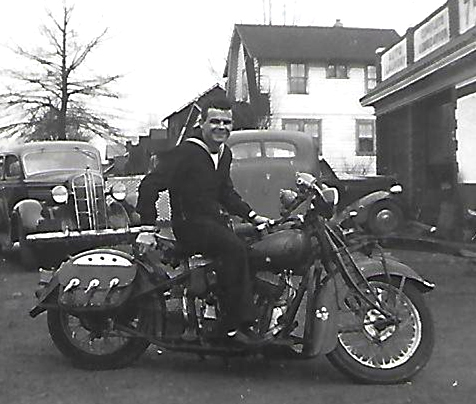
Ernest Hemingway is quoted as saying “Every man has two deaths, when he is buried in the ground and the last time someone says his name. In some ways men can be immortal.” Even though almost 80 years have passed since Steve Rosich died, those who knew him personally, remember him vividly and speak of him fondly to this day. Those of us who have just been introduced to Steve, now have the ability to do the same. Through caring family members, admiring friends, the grateful citizens of France and the steadfast Memorial Day traditions of the Township of Cranford, we truly hope that Steve Rosich, along with all of Cranford’s 86, can indeed achieve immortality.
We are proud to say that, to date, the Cranford 86 project has completed the profiles of 36 of Cranford’s 86 Hometown Heroes. When researching for a story, our team seeks out information from many different sources. But by far, it is the input that we receive from a serviceman’s family and/or friends that we value the most. The personal information, anecdotes, photos and physical mementos that are provided to us from those who really knew these men is what gives life to the profiles that we create. Please refer to the list of the Cranford 86 at cranford86.org. If you are a family member or a friend of one of these men, or you know someone who is, we really need your help. Please contact us by email at info@cranford86.org, Facebook Messenger (Cranford86), or call (908) 272-0876. We have 50 more names that we will not let be forgotten. There are 50 faces that are beginning to blur and need to be restored to clarity. On Memorial Day each year, as they have done since 1921, Cranford VFW Post 335 members read the names of the 86 men from Cranford that made the ultimate sacrifice. When each of those 86 faces has been presented, along with their stories, the Cranford 86 project’s mission will be complete.
Banner sponsorships are still available, email info@cranford86.org or call 908.272-0876
